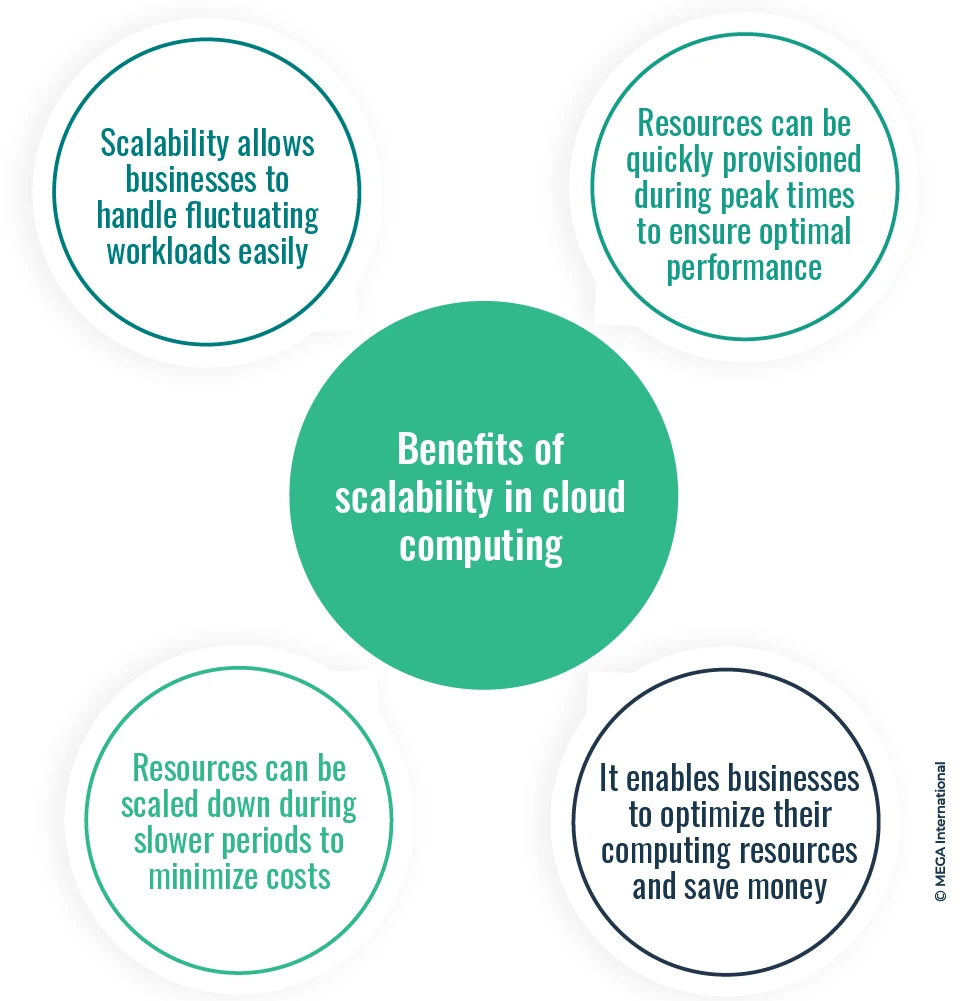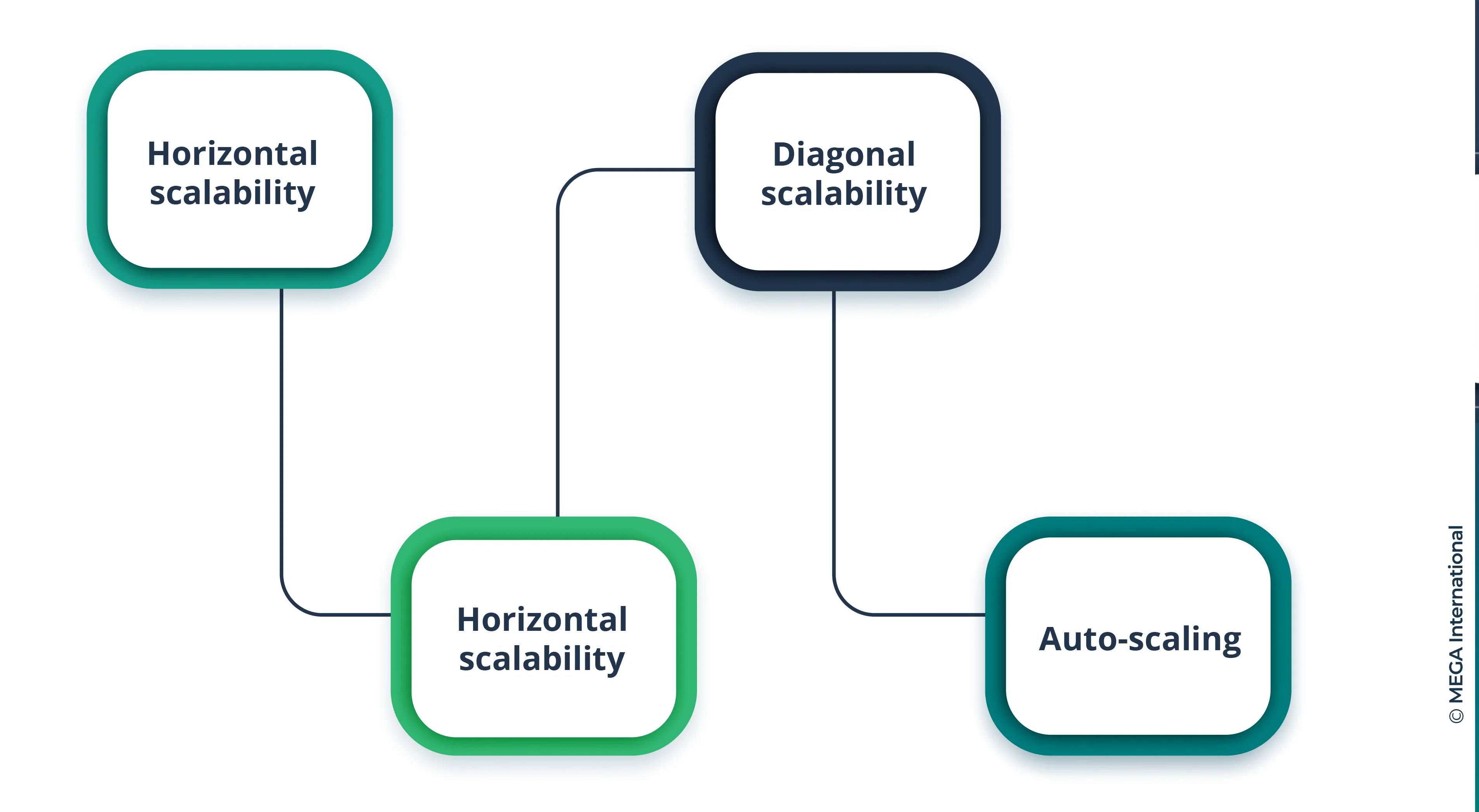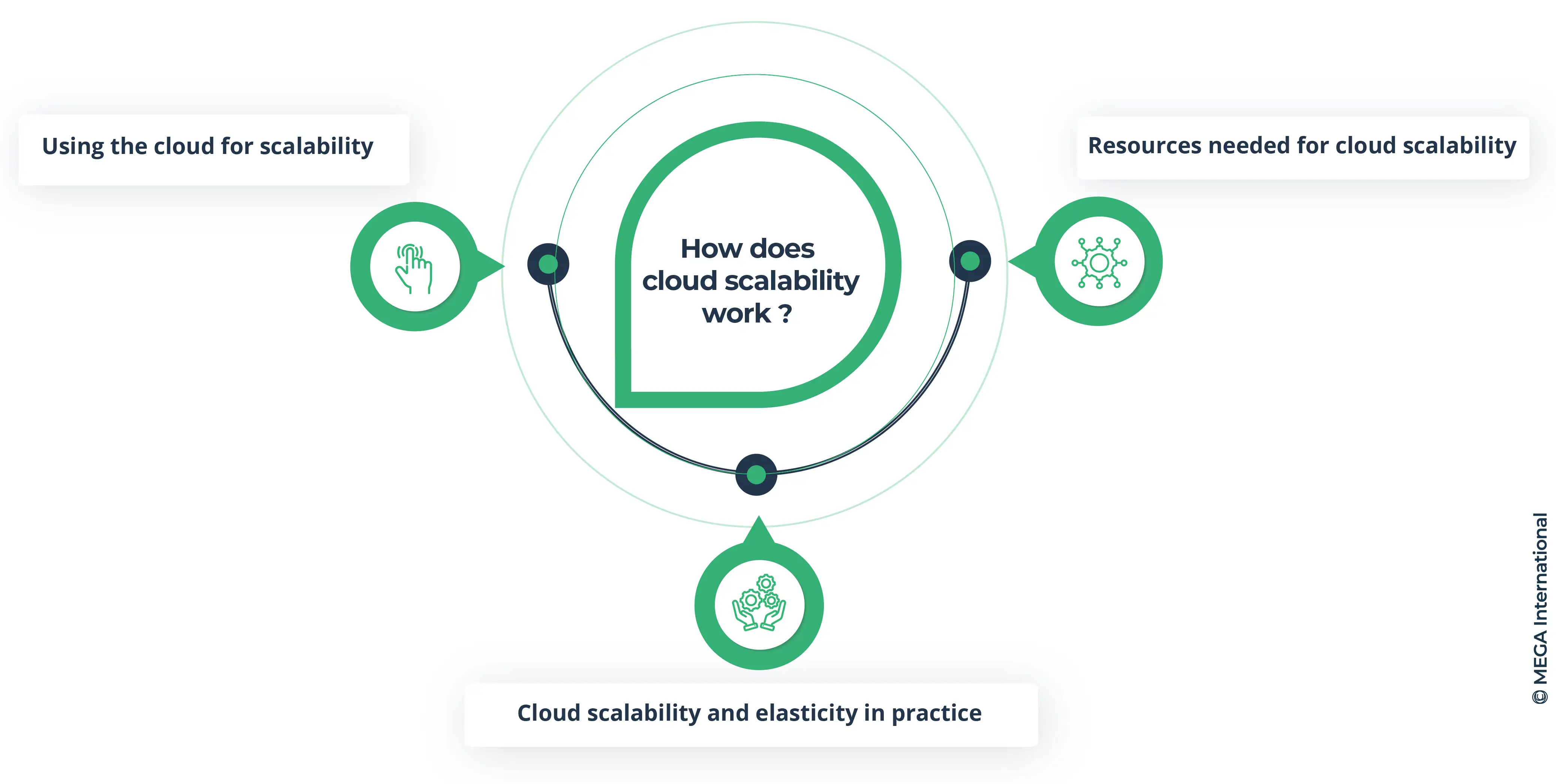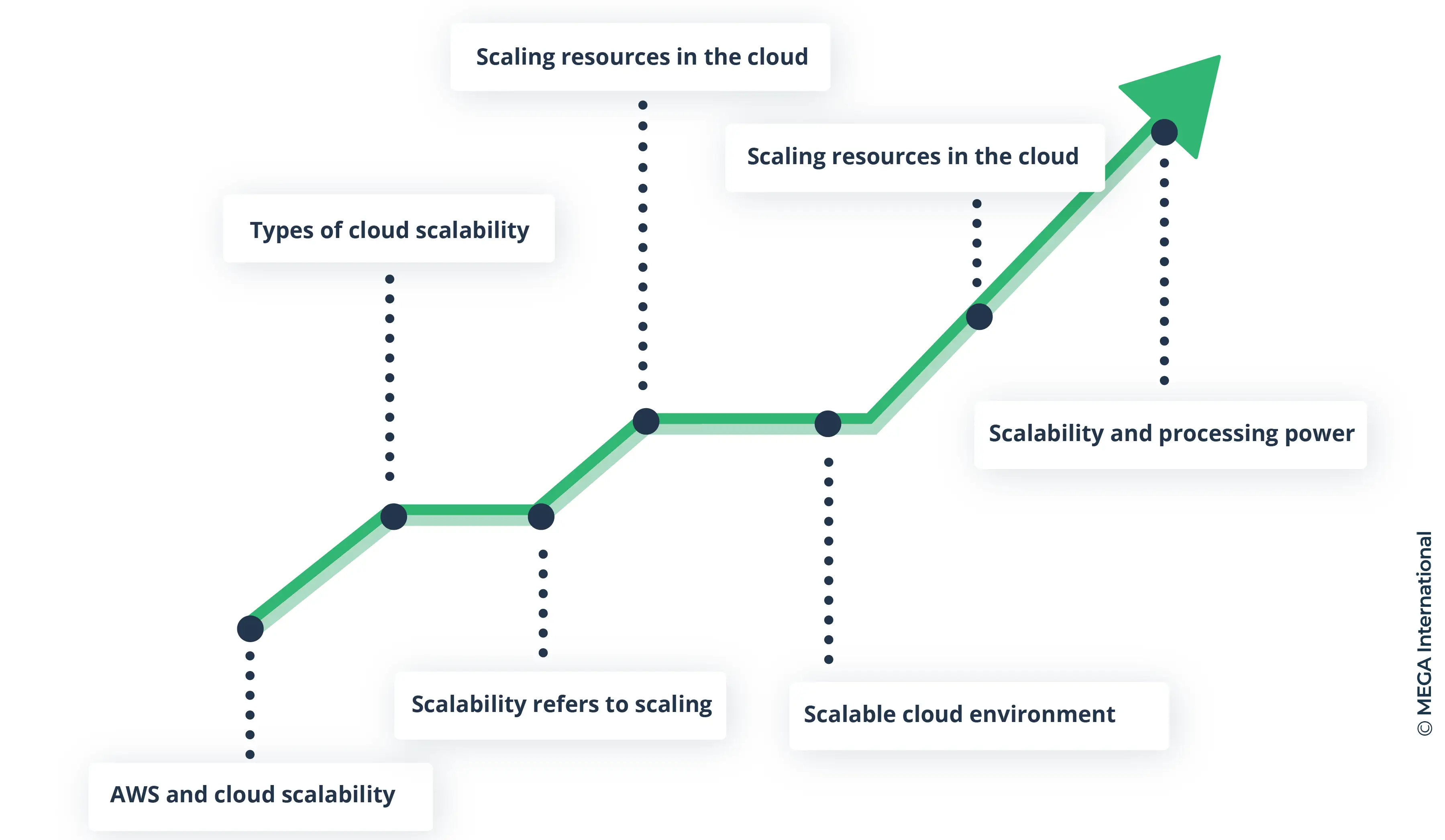
Scalability in Cloud Computing: A Deep Dive
Cloud computing has revolutionized the way businesses and individuals utilize computing resources. One of the key benefits of cloud computing is scalability. Scalability refers to a cloud service or environment's ability to increase or decrease its computing power or resources. In this article, we will explore what scalability in cloud computing is and why it is crucial.
What is scalability in cloud computing?
Definition of scalability
Scalability in cloud computing refers to the ability of a cloud infrastructure to scale up or down resources to meet changing workload demands. It allows businesses to easily add or remove computing resources as needed without significant hardware investment or infrastructure changes.
How does cloud computing enable scalability?
Cloud computing enables scalability through its architecture and virtualization technologies. Cloud providers can easily add or remove computing resources on demand by leveraging virtual server instances.
This allows businesses to scale their applications and services without purchasing and managing physical servers.
Why is scalability important in cloud computing?
Scalability is a crucial aspect of cloud computing due to several reasons.
- Scalability allows businesses to efficiently and seamlessly handle varying workloads. In cloud computing, resources can be dynamically allocated or deallocated to match the demand at any given time. This means businesses can scale up or down the needed resources depending on the workload fluctuations.
For instance, during peak periods, such as holiday seasons or special promotions, businesses can quickly increase their resources to handle the increased traffic. Conversely, during off-peak periods, resources can be reduced to optimize costs. This flexibility ensures that businesses are always capable of meeting the demands of their customers without any disruption or downtime. - Scalability promotes increased efficiency and cost savings. With scalability, businesses can avoid overprovisioning or underprovisioning resources. Overprovisioning occurs when businesses have more resources than they actually need, resulting in wastage and increased costs.
On the other hand, underprovisioning happens when businesses need more resources than required, causing performance issues and customer dissatisfaction. Scalability enables businesses to accurately scale their resources in real-time, thus eliminating unnecessary expenditures and optimizing resource utilization. This leads to cost savings as businesses only pay for the resources they use rather than maintaining excess capacity. - Scalability enhances the overall reliability and performance of cloud computing systems. By allocating or deallocating resources to meet demand automatically, cloud computing can ensure consistently high-performance levels, even during heavy usage periods.
Scalability also helps distribute workloads across multiple servers or data centers, reducing the risk of system failures and improving fault tolerance. Additionally, scalability allows for easy recovery from disasters or sudden spikes in demand by rapidly provisioning additional resources. This ensures that businesses can continue operating smoothly and provide uninterrupted customer service.
Benefits of scalability in cloud computing
The benefits of scalability in cloud computing:

- Scalability allows businesses to handle fluctuating workloads easily.
- Resources can be quickly provisioned during peak times to ensure optimal performance.
- Resources can be scaled down during slower periods to minimize costs.
- It enables businesses to optimize their computing resources and save money.
Learn about the Benefits of Cloud Migration
Types of Scalabilities in cloud computing

Horizontal scalability
Horizontal scalability, or scale-out, refers to adding more instances of the same resource to handle the increased workload. For example, if a web application is experiencing high traffic, additional servers can be added to distribute the load and ensure responsive performance.
Vertical scalability
Vertical scalability, also known as scale-up, refers to increasing the computing power of an existing server or resource.
For example, this can be done by adding more CPU or memory to a virtual machine. Vertical scalability is often used to accommodate applications that require more processing power or memory to function optimally.
Diagonal scalability
Diagonal scalability is a hybrid approach combining horizontal and vertical scalability elements. It involves adding more instances of resources while also increasing the computing power of individual resources.
This type of scalability offers a highly flexible and customizable approach to handling workload demands.
Auto-scaling
Auto-scaling in cloud computing refers to the ability of a system to adjust its resources based on current demand automatically.
This feature allows for efficient resource allocation, ensuring that the system can handle fluctuations in workload without manual intervention.
When the demand increases, auto-scaling adds additional resources to meet the requirements, and when the demand decreases, it removes excess resources to optimize cost. This flexibility enables businesses to scale their resources seamlessly, ensuring high performance and cost-effectiveness.
Auto-scaling is a vital component in cloud computing, enabling organizations to achieve scalability and elasticity while minimizing operational overhead.
Horizontal scaling vs. vertical scaling
Horizontal scaling and vertical scaling are two different approaches used for increasing the performance and capacity of a system. Horizontal scaling, or scaling out, refers to adding more machines to the system to handle the increased load. This means distributing the workload across multiple machines, thereby improving overall performance.
On the other hand, vertical scaling, also known as scaling up, involves upgrading an existing machine by adding more resources, such as increasing the CPU, memory, or storage capacity.
Both approaches have advantages and considerations depending on the system's specific requirements.
One of the main advantages of horizontal scaling is its ability to handle high loads and provide high availability. Adding more machines allows the system to distribute the workload and handle increased traffic without overloading any individual machine.
This also provides fault tolerance, as if one machine fails, the workload can be automatically redirected to other machines without significantly impacting the overall system performance. Horizontal scaling also allows for easy scalability, as new machines can be added to the system. This makes it suitable for systems that experience unpredictable traffic patterns or require high availability and fault tolerance.
Vertical scaling, on the other hand, allows for increasing the capacity of a single machine without the need for additional machines or infrastructure.
This can be particularly useful in cases where a system has a bottleneck that can be addressed by upgrading the existing machine.
Vertical scaling can provide immediate performance improvements without requiring significant changes to the system architecture. However, it does have limitations in terms of scalability and maximum capacity.
There is a threshold beyond which further vertical scaling becomes impractical or costly. Additionally, vertical scaling may result in system downtime during upgrading, as resources need to be added or changed on the existing machine.
When deciding between horizontal and vertical scaling, it is essential to consider factors such as the anticipated workload, performance requirements, budget, and scalability needs.
Horizontal scaling is generally more cost-effective and provides better scalability, while vertical scaling offers more accessible and quicker performance improvements.
In some cases, combining both approaches, known as hybrid scaling, may be the best solution. This involves adding more machines to distribute the workload and periodically upgrading the individual machines to maintain optimal performance.
Scalability vs. Elasticity
Difference between scalability and elasticity
While scalability and elasticity are closely related, there is a subtle difference between the two. Scalability refers to handling varying workload demands by adding or removing resources. Conversely, elasticity goes a step further and refers to the automatic and dynamic allocation of resources based on predefined rules or policies. Elasticity is a crucial feature of cloud computing and allows for more efficient resource management.
How does cloud elasticity relate to scalability?
Cloud elasticity is closely related to scalability, enabling automatic resource allocation based on workload demands.
By implementing elastic scaling rules, businesses can ensure optimal performance and cost efficiency. For example, if a web application experiences a sudden spike in traffic, the cloud infrastructure can automatically provision additional resources to accommodate the increased load.
Scalability benefits in comparison to the elasticity
While cloud elasticity offers a higher level of automation and resource management, scalability still offers distinct benefits. Scalability gives businesses more control over resource allocation and can be customized to specific requirements. Additionally, scalability is often more cost-effective for predictable or steady workloads, as resources can be manually adjusted to match demand.
How does cloud scalability work?

Using the cloud for scalability
Cloud scalability works by leveraging the virtualized nature of cloud computing. Businesses can quickly scale their applications and services by adding or removing virtual instances on demand. This eliminates the need for physical hardware and allows for rapid resource provisioning.
Cloud scalability and elasticity in practice
In practice, automation and monitoring systems implement cloud scalability and elasticity. Businesses can define scaling rules or policies that dictate when and how resources should be added or removed. These rules can be based on CPU usage, memory utilization, or network traffic.
Resources needed for cloud scalability
To achieve cloud scalability, businesses need a cloud infrastructure provider with the necessary tools and services. AWS (Amazon Web Services) providers have built-in features for scalable cloud computing, including auto-scaling groups and load balancers. Additionally, businesses must ensure their applications and services are designed with scalability, such as utilizing distributed architectures and horizontal scaling techniques.
Optimizing scalability in the cloud

AWS and cloud scalability
AWS is a leading provider of cloud computing services and offers a range of tools and services to optimize scalability. Businesses can leverage Amazon EC2 Auto Scaling and Amazon Elastic Load Balancer to automate resource allocation and ensure optimal performance.
Types of Cloud Scalability
Depending on their requirements, businesses can implement different types of cloud scalability. Horizontal scaling, vertical scaling, and diagonal scaling have already been discussed. Other types include geographical scaling, where resources are distributed across different regions, and functional scaling, where specific components or services are scaled independently.
Scalability refers to scaling.
At its core, scalability refers to scaling resources up or down based on workload demands. Scaling can involve adding more instances or increasing the computing power of existing resources. The aim is to ensure optimal performance and cost efficiency.
Scaling resources in the cloud
Scaling resources in the cloud refers to the ability to adjust the allocation of computing resources based on demand dynamically.
This flexibility is possible because cloud computing is based on a pay-as-you-go model, allowing organizations to scale up or down as needed without significant upfront investments in infrastructure.
By using the cloud, companies can easily add or remove resources such as virtual machines, storage, and bandwidth, ensuring they have the right resources to support their business needs. This scalability is particularly valuable when demand fluctuates, as it allows companies to easily handle spikes in traffic or adjust resources during periods of low demand.
Additionally, scaling resources in the cloud offers cost efficiency, as organizations only pay for the resources they actually use. Overall, scaling resources in the cloud provides businesses with the flexibility and cost savings necessary to meet the changing demands of their IT infrastructure.
Scalable cloud environment
A scalable cloud environment refers to an infrastructure that can expand or contract in response to changing demand. It allows businesses to efficiently manage and allocate resources based on their immediate needs, ensuring optimal performance while minimizing costs.
In a scalable cloud environment, the infrastructure can automatically provision additional resources as needed, such as storage, computing power, or network bandwidth. This flexibility and agility enable businesses to adapt to fluctuations in workload and ensure seamless operations quickly.
Scalability is particularly crucial for businesses with unpredictable or seasonal workloads, as they can scale up during peak times and scale down during slower periods, avoiding unnecessary expenses.
Additionally, a scalable cloud environment offers resilience against system failures or disruptions.
If one server fails, for example, the workload can be automatically transferred to another server without interrupting the service.
This high availability ensures continuous uptime and minimizes the impact of potential disruptions on business operations.
A scalable cloud environment allows businesses to optimize resource utilization, reduce costs, adapt to changing demands, and maintain uninterrupted operations, making it an essential tool in today's dynamic and ever-evolving business landscape.
Scalability and processing power
In the realm of technology, scalability is closely related to processing power. Processing power refers to the ability of a computer or a system to perform computational tasks, such as calculations, data processing, and software execution.
The combination of scalability and processing power is crucial for businesses and organizations as they strive to cope with increasing data volumes and growing workloads. Scalability allows systems to seamlessly expand their capabilities to accommodate higher demands, while processing power ensures that these demands can be met efficiently and effectively. Without sufficient processing power, scalability alone would be insufficient to handle the increased workload.
However, without scalability, a system with high processing power would quickly reach its limits and become overwhelmed when faced with a growing workload. Therefore, scalability and processing power are necessary for building robust and efficient systems. When these two attributes are correctly synchronized, businesses can confidently scale their operations, process more significant amounts of data, and cater to the needs of a rapidly evolving digital landscape.
Overall, scalability and processing power go hand in hand, enabling businesses to maintain a competitive edge and effectively meet the demands of a data-intensive world.
Learn About Cloud Deployment
Summary
In conclusion, scalability is one of the critical advantages of cloud computing. The ability to quickly scale resources up or down according to the changing demands of an organization is crucial in today's rapidly evolving business environment. With the cloud, businesses can quickly adapt to spikes in user traffic, ensuring optimal performance and customer satisfaction. Additionally, scalability allows businesses to save costs by only paying for the needed resources without investing in expensive hardware that may become obsolete quickly.
The cloud also allows businesses to scale globally, reaching customers in different regions without the need for physical infrastructure in each location.
This scalability also enables businesses to test new ideas and products with minimal risks, as they can quickly scale up resources for testing purposes and then scale them back down if needed.
However, achieving scalability in cloud computing requires careful planning and consideration of factors such as workload distribution, data management, and performance monitoring. Downtime and performance issues can still occur if not adequately addressed. Auto-scaling and load-balancing techniques can help ensure a seamless and efficient scaling process.
FAQs
Scalability in cloud computing refers to a system or application's ability to handle an increasing workload by adding more resources or nodes to the existing infrastructure. It allows businesses to quickly scale up or scale out to meet the growing demands without hampering performance.
Cloud scalability offers several benefits, including:
- Ability to add or remove resources based on demand
- Improved availability and reliability
- Flexibility to quickly scale to handle increased workloads
- Cost savings by only paying for the resources used
Cloud scalability and cloud elasticity are often used interchangeably, but they differ. Scalability refers to the ability to handle increased workloads by adding or removing resources, while elasticity refers to the automatic provisioning and de-provisioning of resources based on demand.
There are three types of scaling in cloud computing:
- Vertical scaling: Adding resources to increase the capacity of a single instance.
- Horizontal scaling: Adding more instances to distribute the workload across multiple machines.
- Diagonal scaling: Combining vertical and horizontal scaling to optimize performance and capacity.
In public cloud environments like AWS, cloud scalability allows users to easily add or remove servers or resources to existing infrastructure. It allows businesses to scale up dynamically or out based on demand, ensuring optimal performance and cost efficiency.
Cloud scalability is vital in increasing performance by allowing businesses to add more resources or servers to meet growing demands. Organizations can distribute the workload across multiple machines by scaling up or out, ensuring higher performance and improved user experience.
Some key benefits of cloud scalability include the following:
- Improved scalability and flexibility
- Enhanced availability and reliability
- Cost savings by optimizing resource utilization
- Ability to handle increased workloads without performance degradation
Cloud scalability is widely used to meet businesses' dynamic and changing needs. It allows organizations to scale their resources up or down as required, helping them effectively manage workloads, ensure performance, and control costs.
Scalability is one of the primary reasons why businesses opt for cloud computing. It allows organizations to scale resources on demand and meet peak workloads without investing in expensive infrastructure. This flexibility provided by cloud scalability helps businesses operate efficiently and adapt to changing market conditions.


